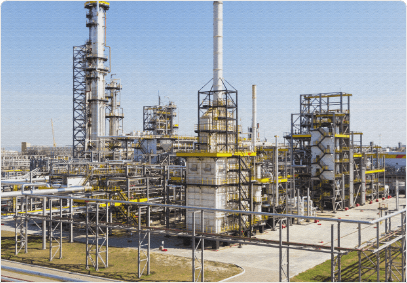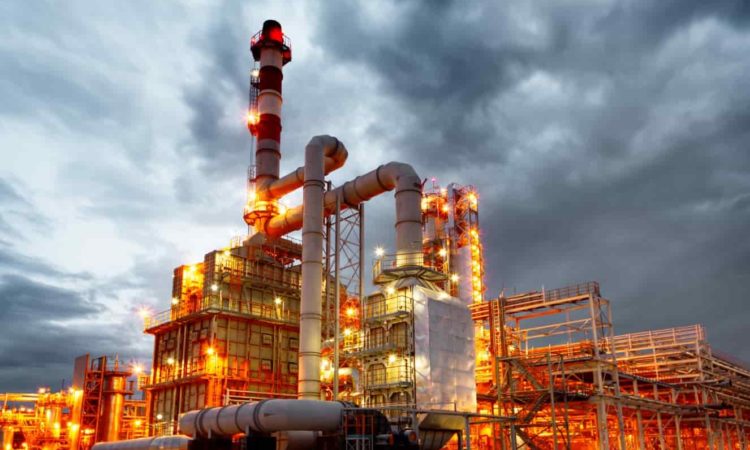The Roar Solutions Diaries
The Roar Solutions Diaries
Blog Article
The Roar Solutions Ideas
Table of ContentsUnknown Facts About Roar SolutionsExcitement About Roar SolutionsThe Main Principles Of Roar Solutions
In such an atmosphere a fire or explosion is possible when 3 basic problems are fulfilled. This is frequently referred to as the "hazardous area" or "combustion" triangle. In order to shield installments from a potential surge a method of analysing and classifying a possibly dangerous area is called for. The purpose of this is to ensure the right choice and installation of tools to eventually stop an explosion and to make sure security of life.
(https://letterboxd.com/roarsolutions/)
No devices should be installed where the surface temperature of the devices is better than the ignition temperature level of the provided hazard. Below are some typical dirt hazardous and their minimum ignition temperature. Coal Dust 380C 225C Polythene 420C (thaws) Methyl Cellulose 420C 320C Starch 460C 435C Flour 490C 340C Sugar 490C 460C Grain Dirt 510C 300C Phenolic Material 530C > 450C Aluminium 590C > 450C PVC 700C > 450C Soot 810C 570C The probability of the threat existing in a focus high adequate to create an ignition will vary from location to location.
In order to identify this threat an installation is divided right into locations of danger depending upon the quantity of time the unsafe is existing. These areas are referred to as Areas. For gases and vapours and dirts and fibres there are 3 zones. Area 0 Area 20 A hazardous atmosphere is highly likely to be present and may exist for lengthy periods of time (> 1000 hours per year) or perhaps continually Zone 1 Zone 21 A hazardous atmosphere is feasible but unlikely to be existing for extended periods of time (> 10 450 C [842 F] A classification of T6 means the minimum ignition temperature level is > 85 C [185 F] Dangerous area electrical devices possibly designed for usage in greater ambient temperature levels. This would showed on the ranking plate e.g. EExe II C T3 Ta + 60C( This indicates at 60C ambient T3 will not be exceeded) T1 T1, T2, T3, T4, T5, T6 T2 T2, T3, T4, T5, T6 T3 T3, T4, T5, T6 T4 T4, T5, T6 T5 T5, T6 T6 T6 A T Course rating of T1 suggests the optimum surface temperature level produced by the tool at 40 C is 450 C. Thinking the linked T Course and Temperature score for the tools are suitable for the location, you can always make use of an instrument with a much more strict Department score than needed for the area. There isn't a clear solution to this question. It actually does depend upon the sort of tools and what fixings need to be accomplished. Devices with specific test treatments that can not be executed in the area in order to achieve/maintain third event score. Have to come back to the manufacturing facility if it is before the equipment's solution. Area Repair Work By Authorised Employee: Complex screening may not be needed however particular treatments might require to be complied with in order for the equipment to maintain its 3rd party score. Authorized personnel should be employed to carry out the job correctly Repair must be a like for like substitute. New component need to be taken into consideration as a straight replacement requiring no special testing of the devices after the repair service is full. Each tool with a harmful ranking should be assessed separately. These are detailed at a high degree listed below, however, for even more thorough details, please refer straight to the standards.
Some Known Details About Roar Solutions
The equipment register is a comprehensive database of devices records that includes a minimum collection of fields to determine each thing's area, technological parameters, Ex category, age, and environmental information. This information is essential for monitoring and handling the tools efficiently within unsafe areas. On the other hand, for periodic or RBI tasting evaluations, the quality will be a mix of In-depth and Close examinations. The ratio of Thorough to Close assessments will be figured out by the Equipment Danger, which is assessed based on ignition threat (the probability of a resource of ignition versus the probability of a flammable ambience )and the dangerous location category
( Zone 0, 1, or 2). This variation will likewise influence the resourcing needs for job preparation. Once Great deals are specified, you can create sampling plans based on the example dimension of each Great deal, which describes the variety of arbitrary tools items to be examined. To establish the required sample dimension, two aspects need to be examined: the dimension of the Whole lot and the group of assessment, which shows the level of initiative that should be used( lowered, typical, or raised )to the evaluation of the Whole lot. By integrating the category of assessment with the Lot size, you can then develop the appropriate being rejected requirements for a sample, implying the allowable number of damaged things found within that sample. For more information on this procedure, please refer to the Energy Institute Guidelines. The IEC 60079 basic advises that the maximum period in between inspections should not go beyond 3 years. EEHA assessments will also be performed beyond RBI campaigns as part of set up upkeep and devices overhauls or repair work. These evaluations can be credited towards the RBI example sizes within the affected Whole lots. EEHA assessments are conducted to recognize mistakes in electrical tools. A heavy scoring system is important, as a solitary tool may have numerous faults, each with varying degrees of ignition danger. If the consolidated score of both inspections is much less than twice the mistake rating, the Lot is considered appropriate. If the Great deal is still considered undesirable, it needs to undergo a full evaluation or justification, which might trigger stricter inspection procedures. Accepted Lot: The reasons of any kind of faults are recognized. If a typical failing mode is located, additional tools may call for maintenance. Faults are classified by intensity( Safety, Stability, House cleaning ), guaranteeing that urgent concerns are analyzed and addressed quickly to mitigate any influence on safety or operations. The EEHA data source need to track and videotape the lifecycle of faults along with the rehabilitative actions taken. Carrying out a robust Risk-Based Inspection( RBI )method is essential for making sure conformity and safety in managing Electrical Devices in Hazardous Locations( EEHA) (eeha courses). Automated Fault Rating and Lifecycle Administration: Easily handle faults and track their lifecycle to boost examination accuracy. The intro of this support for risk-based evaluation additionally reinforces Inspectivity's placement as a best-in-class remedy for governing conformity, along with for any kind of asset-centric inspection usage case. If you have an interest in discovering more, we welcome you to ask for a demonstration and discover exactly how our remedy can change your EEHA monitoring procedures.
The Best Guide To Roar Solutions

In terms of eruptive threat, a dangerous area is a setting in which an explosive atmosphere exists (or may be expected to be existing) in quantities that call for unique precautions for the have a peek at this site building and construction, installment and use tools. electrical refresher course. In this short article we explore the obstacles dealt with in the workplace, the threat control actions, and the needed competencies to function safely
It issues of modern life that we make, save or deal with a series of gases or fluids that are considered flammable, and a range of dirts that are considered flammable. These compounds can, in certain problems, create eruptive atmospheres and these can have significant and awful consequences. A lot of us are acquainted with the fire triangle get rid of any type of among the three components and the fire can not occur, yet what does this mean in the context of hazardous locations? When breaking this down right into its easiest terms it is basically: a mix of a certain amount of release or leakage of a particular compound or material, combining with ambient oxygen, and the existence of a source of ignition.
In the majority of instances, we can do little about the degrees of oxygen airborne, however we can have significant influence on resources of ignition, as an example electric equipment. Hazardous locations are documented on the dangerous area category drawing and are recognized on-site by the triangular "EX LOVER" indication. Below, amongst other vital details, zones are divided right into 3 kinds depending upon the threat, the likelihood and period that an explosive ambience will certainly exist; Zone 0 or 20 is deemed the most dangerous and Zone 2 or 22 is deemed the least.
Report this page